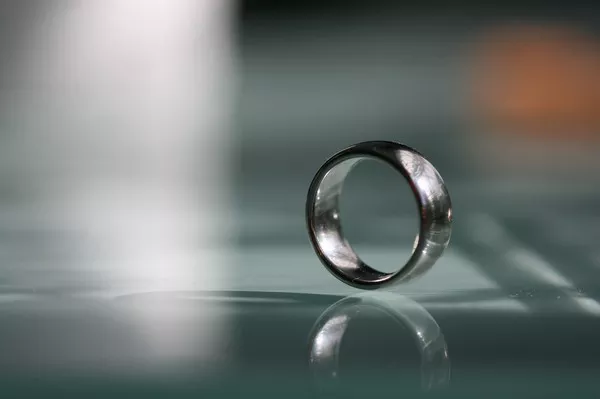In the realm of numismatics, the study and collection of currency, certain artifacts stand out not only for their historical significance but also for their monetary value. The 1935F Silver Certificate is one such piece, revered for its unique characteristics and the era it represents in American currency history. This article aims to delve into the details surrounding the 1935F Silver Certificate, exploring its origins, features, historical context, and most importantly, its current market value.
Origins and Background
The Silver Certificates were a form of paper currency issued by the United States government, backed by silver reserves held by the Treasury. The 1935F series, specifically, was part of a broader issuance that began in the early 20th century and continued until the mid-20th century. These certificates were primarily intended to circulate alongside standard U.S. currency and were redeemable in silver dollars upon demand.
The 1935F series, in particular, was issued during a time of economic recovery following the Great Depression and amid global uncertainties leading up to World War II. This historical context adds layers of significance to these certificates, reflecting both economic policies and broader geopolitical events of the time.
Features and Design
The 1935F Silver Certificates share common design elements with other series issued around the same time. They typically feature intricate engraving, including portraits of notable figures from American history, decorative motifs, and detailed borders. The face of the certificate prominently displays the denomination and the promise to pay the bearer on demand.
One distinctive feature of the 1935F series is its seal and serial number placement, which can vary slightly between different issues. Variations in printing, signatures of Treasury officials, and the condition of the certificate itself all contribute to its uniqueness and potential value to collectors.
Collectibility and Market Demand
The collectibility of the 1935F Silver Certificates is driven by several factors. First and foremost is historical interest; collectors are often drawn to items that encapsulate a specific period or event in history. The Great Depression and the subsequent economic policies, coupled with the transition away from the gold standard, make these certificates particularly intriguing to collectors of American currency and history.
Furthermore, scarcity plays a crucial role in determining the value of any collectible item, including currency. While millions of 1935F Silver Certificates were printed, their circulation life and the subsequent withdrawal from circulation due to changes in monetary policy and currency redesign contribute to their relative scarcity today.
Determining Value
Several key factors influence the value of a 1935F Silver Certificate in today’s market:
Condition (Grade): The condition of a certificate significantly affects its value. Certificates that are well-preserved, with minimal folds, creases, or discoloration, command higher prices than those that are worn or damaged.
Rarity and Demand: As with any collectible, rarity and demand among collectors are crucial. Certificates with low printing numbers, unique features, or historical significance may fetch higher prices due to increased demand.
Variations and Errors: Variations in printing, such as misprints or errors in serial numbers, can also add to the value of a certificate. Collectors often seek out these anomalies for their rarity and uniqueness.
Market Trends: The overall market for numismatics and collectibles can fluctuate based on economic conditions, collector trends, and historical anniversaries or events that renew interest in specific items.
Current Market Value
To determine the current market value of a 1935F Silver Certificate, collectors and investors often refer to reputable sources such as auction records, numismatic publications, and specialized dealers. Online platforms dedicated to numismatics and currency trading also provide valuable insights into recent sales and trends.
As of now, the value of a 1935F Silver Certificate can vary widely depending on its specific characteristics and condition. Generally, certificates in average circulated condition might range from $5 to $20, while those in uncirculated or near-mint condition could command higher prices, potentially ranging from $50 to several hundred dollars or more for rarer variations or error notes.
Factors Affecting Value
Grade and Condition: As mentioned earlier, the condition of the certificate is paramount. A well-preserved certificate with crisp edges and vibrant ink colors will typically command a higher price than one that shows signs of wear and tear.
Serial Numbers and Signatures: Variations in serial numbers, particularly low or unique numbers, can increase a certificate’s desirability among collectors. Similarly, certificates signed by prominent Treasury officials or with specific seal variations may fetch higher prices.
Historical Significance: Certificates associated with significant historical events or periods may see increased demand and subsequently higher values among collectors with an interest in American history.
Market Trends: Like any market, the value of numismatic items can fluctuate based on supply and demand dynamics. Economic conditions, collector trends, and broader societal interests all play a role in determining market prices.
Authentication and Expert Advice
For collectors considering purchasing or selling a 1935F Silver Certificate, it’s crucial to ensure authenticity and seek expert advice if needed. Authentication services offered by reputable numismatic organizations can provide certification of a certificate’s authenticity and condition, adding credibility and value to transactions.
Furthermore, consulting with experienced numismatists or collectors can offer valuable insights into market trends, pricing expectations, and potential opportunities for acquiring or selling certificates.
See Also Silver Bullion vs. Silver Coins: What’s the Difference?
Conclusion
The 1935F Silver Certificate represents not only a piece of American currency history but also a tangible link to broader economic and political events of its time. As a collectible item, its value is determined by a combination of factors including rarity, condition, historical significance, and market demand.
Whether acquired for its monetary value or as part of a broader collection of historical artifacts, the 1935F Silver Certificate continues to captivate collectors and enthusiasts alike. Understanding its origins, features, and current market dynamics is essential for anyone interested in exploring the fascinating world of numismatics and American currency history.


